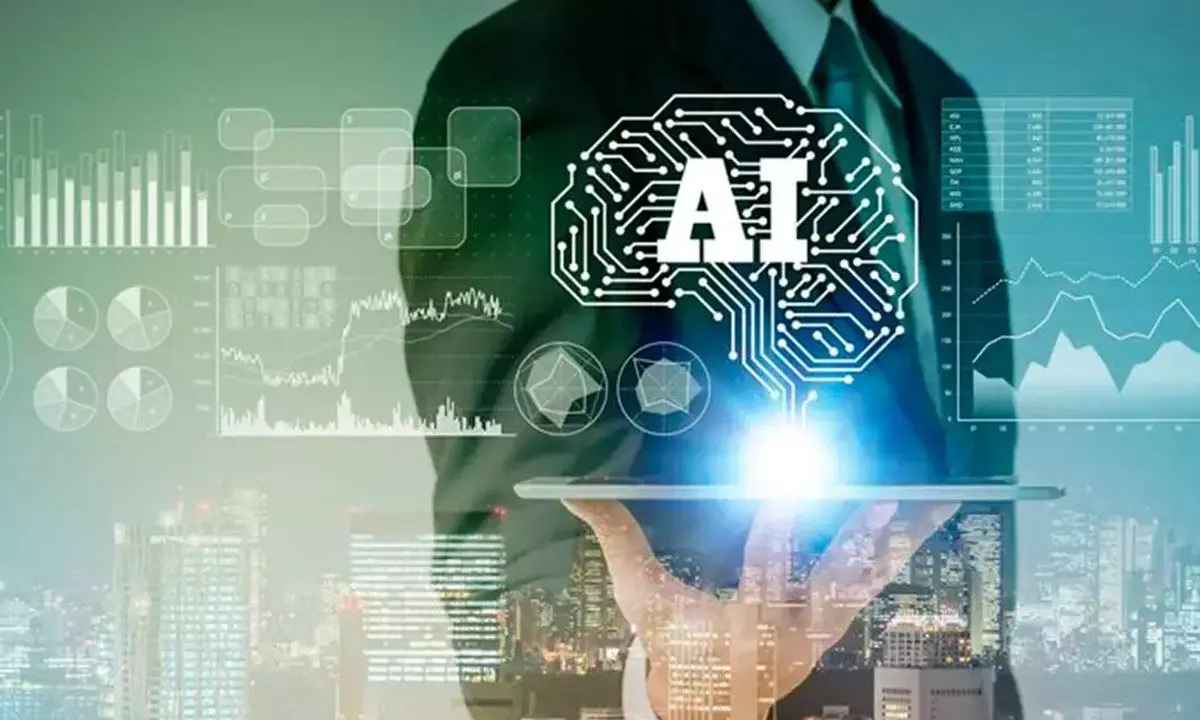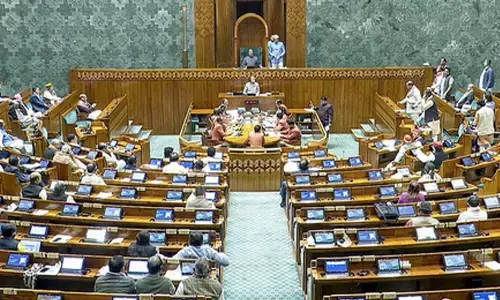Promises and perils of AI

Artificial Intelligence
As the debate on whether Artificial Intelligence (AI) is more of a threat than a technological advancement came to a head, US President Joe Biden issued a wide-ranging Executive Order on October 30 clearly warning against the dangers posed by AI, particularly in the areas of development of devastating weapons of destruction and cyberattacks.
New Delhi: As the debate on whether Artificial Intelligence (AI) is more of a threat than a technological advancement came to a head, US President Joe Biden issued a wide-ranging Executive Order on October 30 clearly warning against the dangers posed by AI, particularly in the areas of development of devastating weapons of destruction and cyberattacks.
The order went on to define the framework of strong intervention by the Federal government – should it become necessary for ensuring AI Safety, Security and Trust – by way of monitoring companies in the business of developing AI products and taking even coercive action under the old Defence Productions Act to compel abandonment of a given initiative of the enterprise. This move has been made also in the context of the government being a key funder of scientific research in the US.
The major threats associated with AI range from breach of data privacy to interference in elections, from destruction of critical infrastructure particularly in the energy sector to pandemic preparedness and from misuse of biological material to creating instruments of repression. American administration officials have talked of Chinese-sponsored research devoted to exploring ways of disrupting critical communications infrastructure between the US and Asia.
It was clear – judging from the fact that Social Media had already become an instrument of combat – that AI representing an ultimate advance of IT would tempt countries and players to develop it for newer versions of ‘proxy wars’ as well as for weapon automatisation.
Interestingly, AI-based deepfakes – designed, among other things, to influence the electorate, defame leaders and dignitaries and create public discords – are already operating in the Indian context.
Geoffrey Hinton known for his work on machine learning and neural networks has reportedly talked of dangers from AI while Elon Musk along with many other tech leaders has warned in an open letter that uncontrolled AI experiments could pose ‘profound risks to society and humanity’.
Sam Altman CEO of OpenAI wanted policymakers to ensure that regulations ‘promoted innovation and did not strangle it’. India is at the forefront of global efforts to facilitate the legitimate growth of AI for the larger good of the world without letting it produce any destructive fallout. In the run-up to the G20 Summit in Delhi last September, the security establishment was able to bank on the Facial Recognition System relying on AI-based cameras. AI was an important talk point at the Delhi G20 meet.
The potential of generative AI in making an economic impact on the world was examined and some concerns were raised about possible job loss especially white-collar jobs resulting from AI applications. It can be clearly seen that without cutting jobs, businesses can use AI to improve efficiency and productivity - efficiency being a measure of productivity.
Prime Minister Narendra Modi and US President Biden had bilateral talks on the eve of the G20 summit at the Prime Minister’s residence on September 8 to expand cooperation between the two countries in emerging domains like AI and Space. This has brought Indo-US relations to an entirely new level of strategic friendship.
Earlier in July this year, the Indo-US Science and Technology Forum (IUSSTF) designed a programme of Indo-US engagement for Technology Partnership for the Future with a new direction and investment of energy in AI and with an endowment of $2 million. The programme will work for the joint development and commercialisation of AI.
India believes that it can steer clear of any risks to get the programme to promote social well-being by impacting health care, agriculture, climate change and so on. More recently, AI figured prominently in the talks between US President Biden and President Xi Jinping of China held in San Francisco on November 15 during the APEC conference.
Just as IT applications made human processes more efficient with computerisation, AI makes IT applications smarter – being smart means being able to produce more per unit of resource whether the resource is money, manpower or time. AI is the ability of a system or a program to think and learn from experience. Machine learning and deep learning techniques are based on vast volumes of data being analysed instantly for making intelligent decisions or solving specific problems. Natural Language Processing is used to make conversation as human and personal as possible. Chat boxes improve the user experience and learning material can be accessed through Voice Assistants like Alexa and Siri. Robots powered by AI use real-time updates to provide for carrying of goods, cleaning of offices and managing inventory.
For economic companies, AI is helpful in reducing credit card fraud by examining the user’s patterns. AI can identify fake reviews. People leverage the strength of AI because the work they need to carry out on a daily basis is increasing all the time.
Mention should be made of AI helping to create a rich learning experience by generating audio and video summaries and integral lesson plans. AI can help analyse chronic conditions and lab data to ensure early diagnosis.
Apart from personal usage, facial recognition is now a widely used AI application in high-security areas in several industries. AI identifies illegal access. Machine learning allows for the detection of even minor abnormalities and can point to anything that is wrong with the system.
AI, however, has to still advance a lot in areas such as language processing, creativity, problem-solving, comprehension of subtleties and evaluation of human output.
Analytical thinking, human consciousness and emotional intelligence place the human brain on a different footing that was not available to computers. At the end of it, AI worked on pattern reading and word recognition and was governed by the input-output principle.
AI can improve business growth and expansion, advance the cause of education and health, reform governance with particular reference to the implementation of welfare schemes, make the organisational working more transparent and ethical and help to enrich everybody’s lifestyle. Exercise of human judgement will be necessary in crucial areas ranging from dispensing justice to the responsibility of pressing the nuclear button.
In the final analysis, it is to be realised that any technology- because of its public profile- would be used for the good of humanity but was also available to the malcontents ranging from non-state actors like terrorists to ruthless dictators who did not think of anything beyond their ‘personal’ power.
Prime Minister Modi has called for expanding ‘ethical’ AI and stipulated that even though AI had ‘associated risks’ it had proven to be an enabler of the digital and innovation ecosystem. India recognises the need for actively formulating regulations rooted in a ‘risk-based user harm’ approach. It envisages AI as a catalyst for economic growth, job creation and industrial transformation. India acknowledges the importance of safeguarding citizens’ interests and wants AI benefits to become accessible to all segments of society in an equitable manner. We should favour a collaborative approach to AI development, involve government bodies, industry stakeholders, researchers, civil society and subject experts and opt for an adaptive regulatory framework.
NITI Ayog, the premier policy think-tank of India, is actively engaged in evolving India’s strategy for AI development giving special attention to key areas like education, workforce development, data usage, security and research.
(The writer is a former Director of the Intelligence Bureau. Views are personal)

















